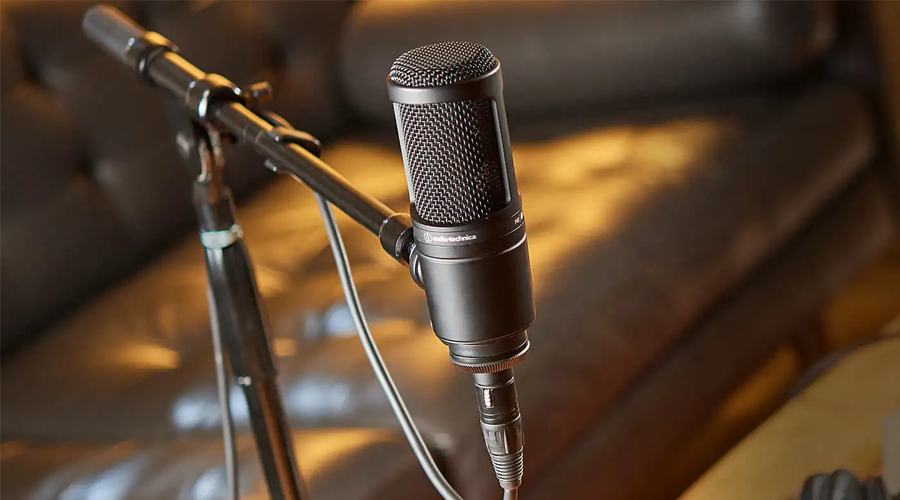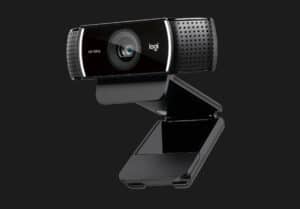The Audio-Technica AT2020 stands out as a versatile and affordable option in the crowded market of condenser microphones. It promises to deliver professional-grade recordings without breaking the bank. In this Audio Technica AT2020 review, we cover everything you need to know about this versatile starter mic.
Castos is a participant in the Amazon Services LLC Associates Program. We may earn commissions from your purchases on Amazon.com, though at no cost to you.
Our Verdict
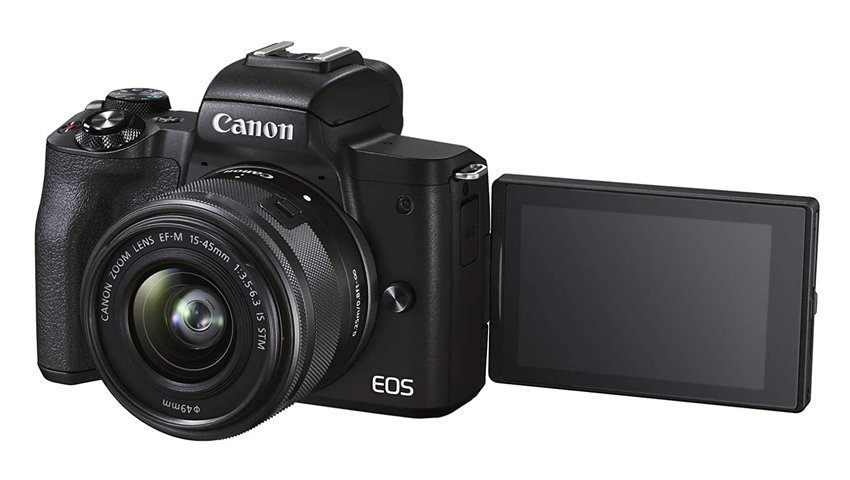
The Audio-Technica AT2020 isn’t the best microphone, but it’s a great entry-level device for new podcasters, YouTubers, and content creators. It’s also great for anyone who spends a lot of time in remote meetings who needs better sound than their laptop’s built-in mic. At $99, the sound quality of this cardioid condenser is decent and the build quality is excellent.
Pros
- Excellent sound quality for its price.
- Versatile for various recording tasks (vocals, instruments).
- Durable build quality.
- Low self-noise level.
- Easy to use for beginners and professionals alike.
Cons
- Requires external 48V phantom power.
- Lacks onboard features like gain control or a pad.
- Not suit all vocal types equally.
- Comes with minimal accessories.
- Some find its design too simplistic.
Tip
Need more equipment for your podcast or YouTube channel? Check out our comprehensive list of gear recommendations.
Overview of the Audio Technica AT2020
The Audio Technica AT2020 is a standout microphone in the realm of entry-level audio equipment, favored for its balance of quality and affordability. As new podcasters embark on their audio journey, understanding the nuances of this microphone can help set the stage for informed equipment choices.
Design and Build
The AT2020 boasts a robust and sleek design. Its all-metal construction ensures durability, which means it’s a reliable choice for podcasters who may be setting up and breaking down their recording setups frequently. It has a professional and practical visual design.
The AT2020 is relatively lightweight and easy to mount on a variety of stands thanks to its standard threading. However, it’s worth noting for new users that it requires a shock mount (sold separately) to minimize handling and vibration noise.
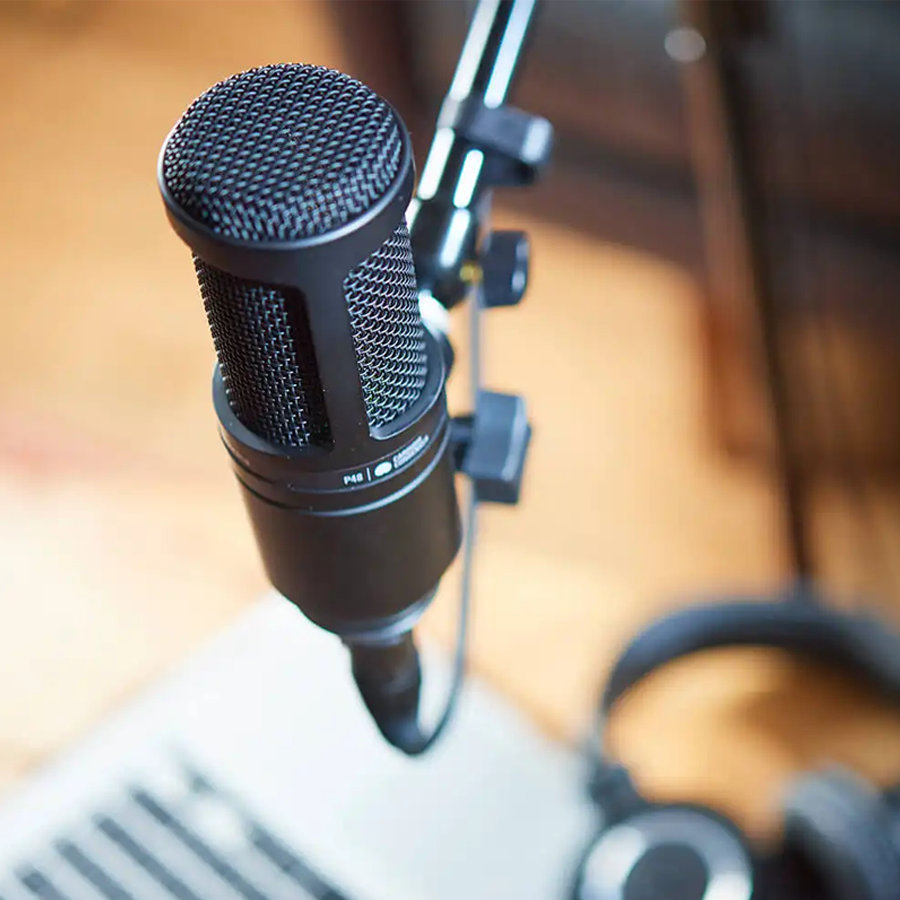
Sound Quality
Since it’s a mic, the sound quality is one of the most important elements of our Audio Technica AT2020 review. The AT2020 is often celebrated for offering a clear and balanced audio profile that’s exceptional at its price point. It captures a wide frequency range, ensuring that vocal recordings are crisp and detailed.
The microphone uses a fixed cardioid pattern that does an admirable job of isolating the speaker’s voice from unwanted ambient sound. This directional pickup pattern is especially beneficial for podcasters who may not have access to acoustically treated recording spaces.
While it may not rival the depth and nuance of higher-end microphones, the AT2020 provides a solid foundation for high-quality podcasting audio, making it a favored choice among beginners who are still honing their recording techniques and acoustic treatments.
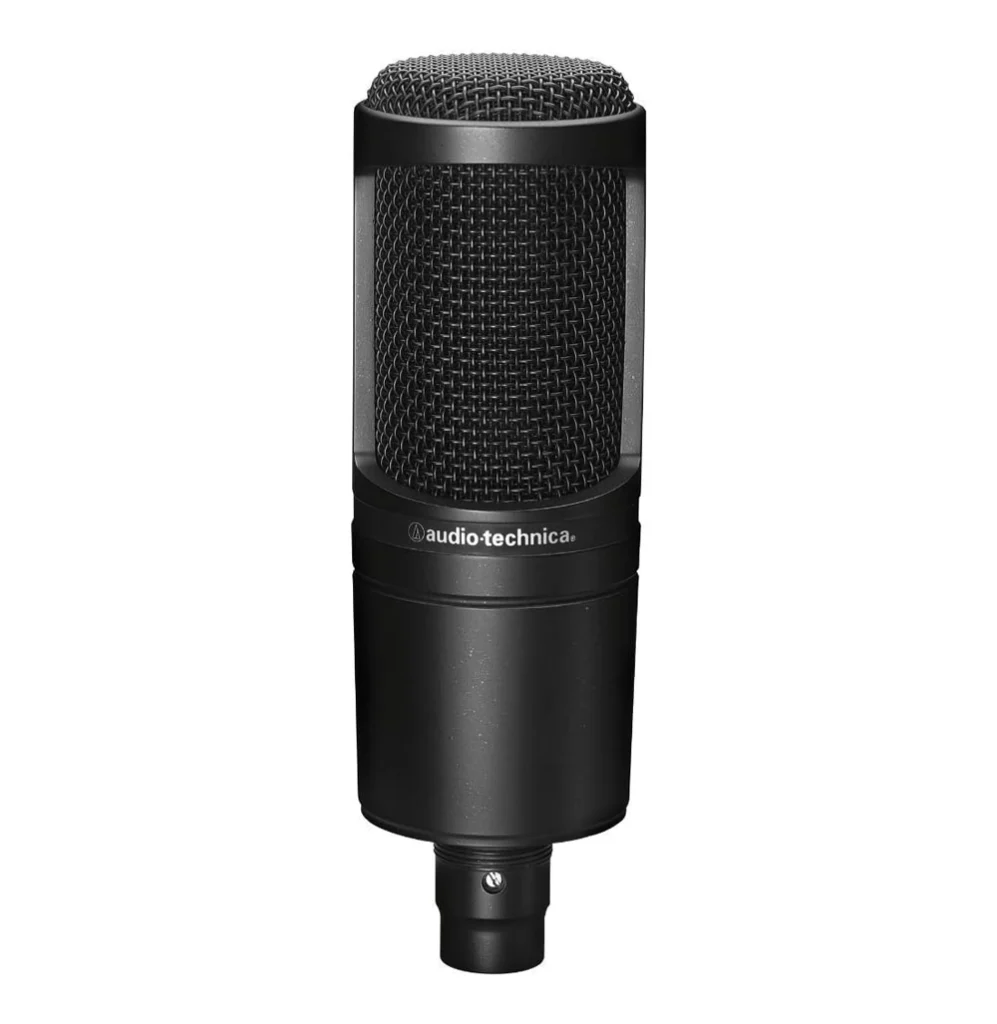
However, it’s important for podcasters to understand that the AT2020, while versatile, does have its limitations. It’s a condenser microphone, which means it’s sensitive and can pick up background noise if not used in a reasonably quiet environment.
Additionally, being a side-address microphone, users need to ensure they speak into the correct part of the mic for optimal sound capture.
What’s in the Box of the AT2020?
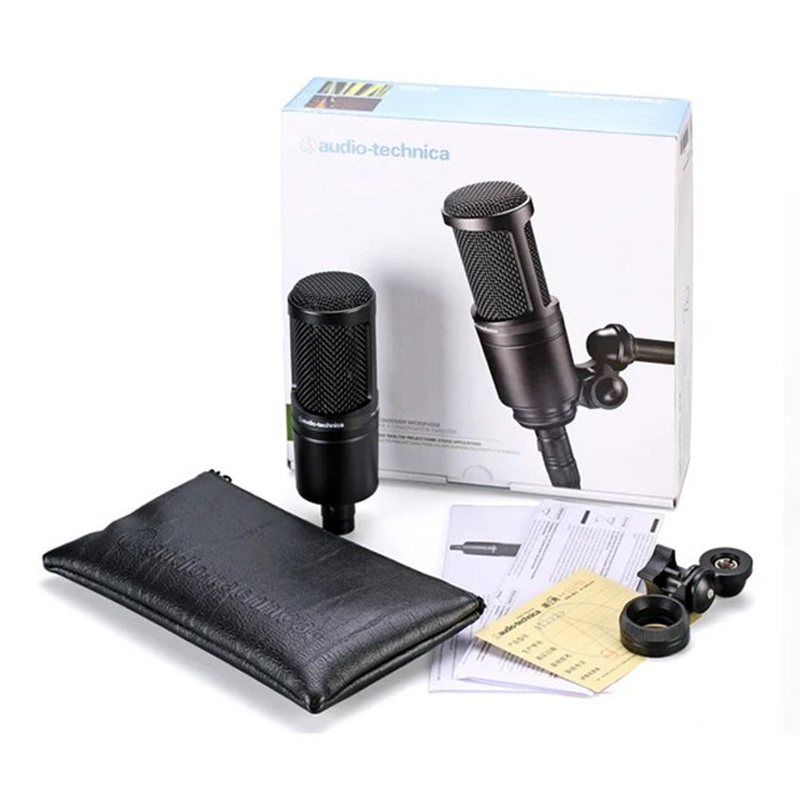
When you purchase the Audio-Technica AT2020, the box typically includes:
- The AT2020 microphone itself.
- A stand mount for 5/8″-27 threaded stands.
- A 5/8″-27 to 3/8″-16 threaded adapter to accommodate different stand types.
- A soft protective pouch for storage and transport.
- An instruction manual.
Note that an XLR cable and shock mount are not included and would need to be purchased separately if required.
Specifications of the Audio Technica AT2020
- Element: Fixed-charge back plate, permanently polarized condenser
- Polar Pattern: Cardioid
- Frequency Response: 20 Hz – 20 kHz
- Open Circuit Sensitivity: –37 dB (14.1 mV) re 1V at 1 Pa
- Impedance: 100 ohms
- Maximum Input Sound Level: 144 dB SPL, 1 kHz at 1% T.H.D.
- Dynamic Range (Typical): 124 dB, 1 kHz at Max SPL
- Signal-to-Noise Ratio: 74 dB, 1 kHz at 1 Pa
- Phantom Power Requirements: 48V DC, 2 mA typical
- Weight: 345 g (12.1 oz)
- Dimensions: 162.0 mm (6.38″) long, 52.0 mm (2.05″) maximum body diameter
- Output Connector: Integral 3-pin XLRM-type
- Accessories Included: Stand mount for 5/8″-27 threaded stands, 5/8″-27 to 3/8″-16 threaded adapter, soft protective pouch
Who is the Audio-Technica AT2020 For?
The Audio-Technica AT2020 is an ideal microphone for individuals stepping into the audio recording world as it offers a balance of affordability, ease of use, and quality. It’s particularly well-suited for budding podcasters, home studio musicians, voiceover artists, and content creators who require clear and detailed audio capture.
What is the Audio-Technica AT2020 Warranty?
The Audio-Technica AT2020 typically comes with a two-year limited end-user manufacturer’s warranty. It covers defects in materials and workmanship and is valid only for the original purchaser from an authorized Audio-Technica dealer.
Under this warranty, if the product is found to be defective during the warranty period, Audio-Technica will either repair or replace the microphone without charge for parts or labor. However, this does not cover damages attributable to misuse, abuse, neglect, accidental damage, or unauthorized modifications and repairs. You need the receipt to benefit from the warranty service.
How Does the Audio-Technica AT2020 Connect?
The AT2020 is a condenser microphone that connects using an XLR cable. This type of connection is known for its ability to deliver high-quality, balanced audio signals, making it a preferred choice for recording studios and live sound setups.
Use an XLR cable to connect the microphone to an audio interface, mixer, or preamp that supplies 48V phantom power. This device will convert the microphone’s analog signal into a digital one for your computer, or it will simply route the audio for live sound applications.
If you’re recording to a computer, the audio interface will typically connect via USB. The audio interface acts as a bridge between the microphone and the computer, ensuring high-quality signal transmission.
Audio Technica AT2020 Frequency Response
The Audio-Technica AT2020 offers a frequency response range of 20 Hz to 20 kHz. This wide range allows the microphone to capture a full spectrum of audible frequencies. It’s versatile for recording vocals, instruments, and other sound sources. This is an impressive range for a budget microphone.
Audio Technica AT2020 Sensitivity Rating
The sensitivity rating of the Audio-Technica AT2020 is -37 dB (14.1 mV) re 1V at 1 Pa. This indicates how well the microphone converts acoustic energy into electrical energy, with this level being typical for studio condenser microphones, ensuring it can capture nuanced sounds and quiet sources effectively.
Audio Technica AT2020 Impedance Level
The Audio-Technica AT2020 has an impedance level of 100 ohms. This level is suitable for a wide range of audio interfaces and mixers, ensuring compatibility and maintaining sound quality across various recording setups.
Where Should You Place the AT2020 for the Best Sound?
For the best sound with the AT2020, position the microphone at a distance of about 6-12 inches from your face. Aim the front of the microphone (the side with the Audio-Technica logo) directly at your mouth. Ideally, you should place a pop filter between the microphone and the speaker to reduce plosive sounds.
The microphone should be placed in a well-treated room, or at least away from reflective surfaces, to minimize unwanted echoes and background noise.
Who Shouldn’t Get the Audio-Technica AT2020?

The Audio-Technica AT2020 might not be the best choice for seasoned audio professionals seeking advanced features or those involved in specialized recording scenarios that require multi-pattern capabilities or extremely high SPL handling.
It’s also not ideal for users looking for a plug-and-play USB microphone, as the AT2020 requires an audio interface or mixer with phantom power.
Furthermore, if you’re recording in acoustically untreated environments and need microphones with superior noise-cancellation features, you’ll probably find the AT2020 less effective.
Essentially, if you’re beyond the entry-level stage or have very specific audio requirements, you might want to explore more advanced options.
When to Consider Upgrading

The Audio Technica AT2020 is a commendable choice for those beginning their podcasting or content creation journey. However, as your skills evolve and your audience grows, you might start feeling the limitations of this starter microphone.
As you become more experienced, you might notice subtleties in sound capture that you weren’t aware of before, like the desire for a wider frequency range or better off-axis noise rejection. If you find the audio quality isn’t as rich or detailed as you’d like, especially when comparing your recordings to professional-grade podcasts, it may be time to upgrade.
If you start recording in varied environments or with multiple speakers and the AT2020 isn’t capturing the sound as effectively as you need, consider a more versatile microphone.
Furthermore, pay attention to feedback from your audience, especially regarding audio clarity and quality. If your listeners complain about poor sound quality, that would be a clear indicator that an upgrade is beneficial.
What to Look for in Your Next Microphone
- Enhanced Sound Quality: Look for a microphone that offers richer, more detailed sound capture, providing a noticeable upgrade over the AT2020.
- Versatility: Consider microphones that can handle a variety of recording situations and sound sources, offering multiple polar patterns or better isolation of voice from background noise..
- Advanced Features: Look for features that cater to your growing needs, such as built-in gain control, headphone jacks for real-time monitoring, or digital output for easier integration with modern recording setups.
Intermediate-Level Microphones to Consider
Whenever we review a piece of equipment, we like to offer some alternatives, and this Audio Technica AT2020 review is no different. Here are some other mics worth considering:
The Rode NT1-A is renowned for its clarity and warmth. It’s a step up in sound quality and is particularly favored for its low self-noise.
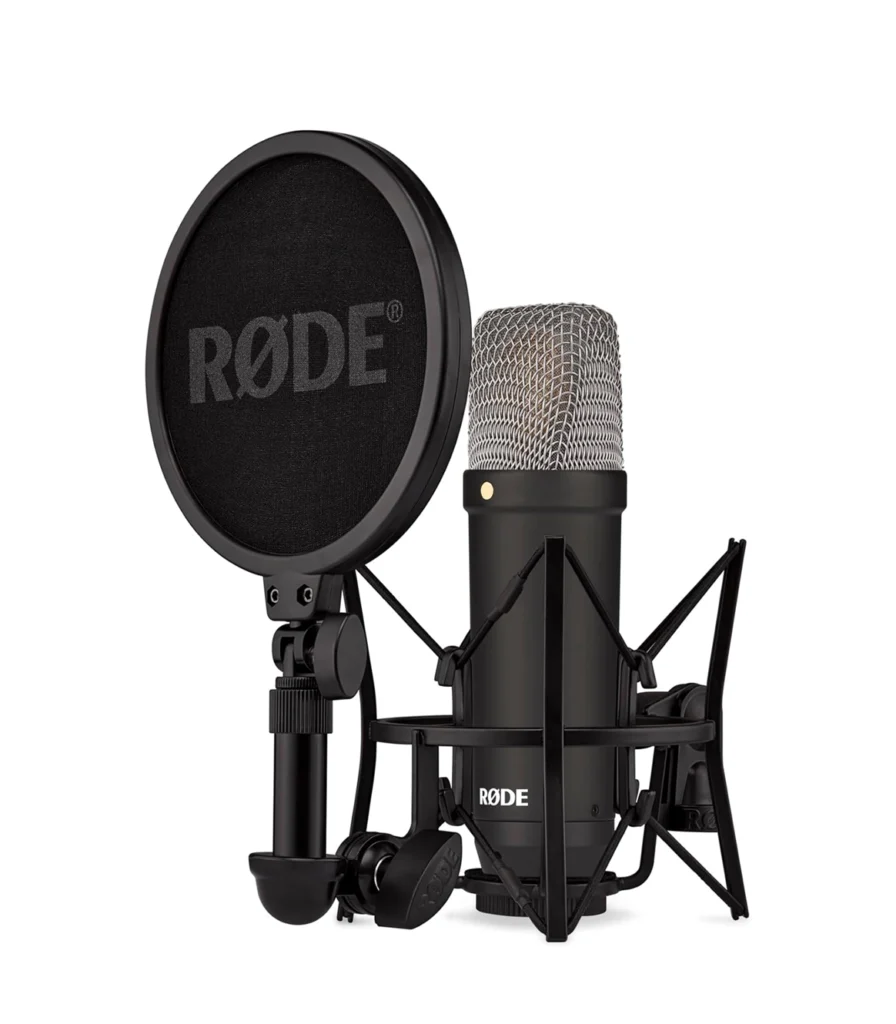
The Shure SM7B is a favorite among podcasters and broadcasters. It excels in vocal reproduction and is versatile enough to handle a wide range of recording situations.
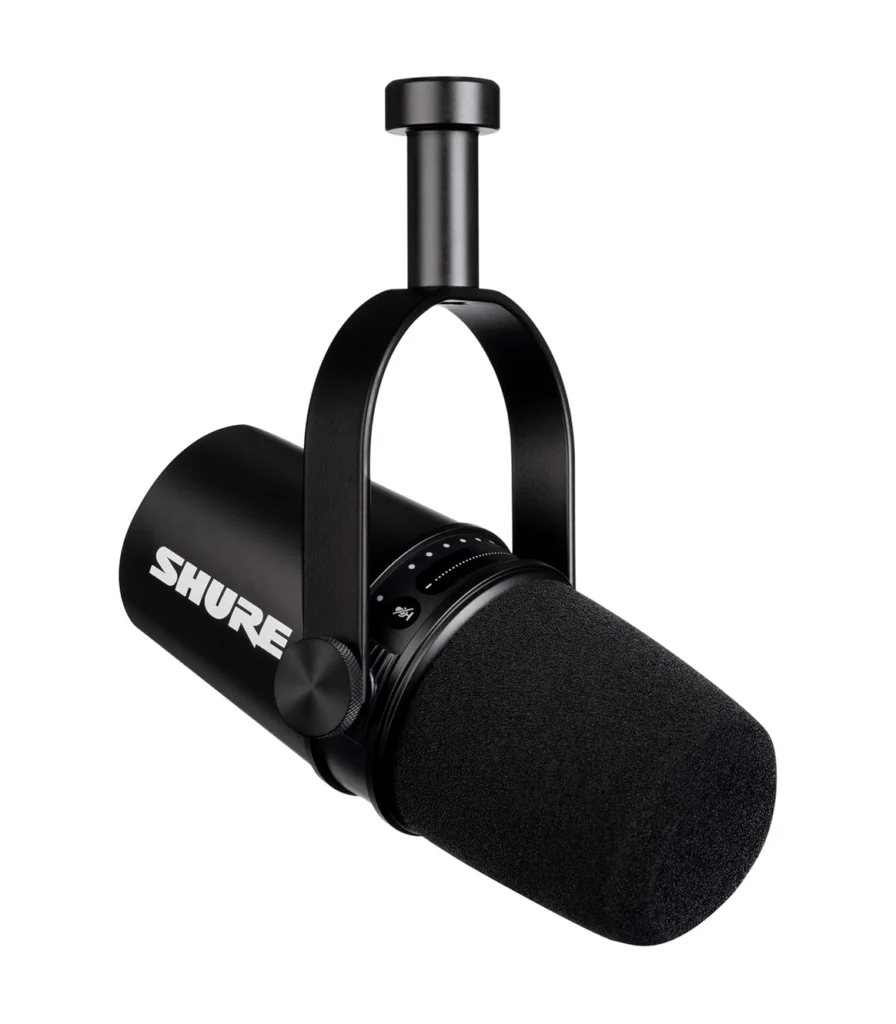
Finally, the AKG C214 offers the performance of AKG’s higher-end C414 in a more affordable format. The C214 is known for its detailed sound capture and broad frequency range.
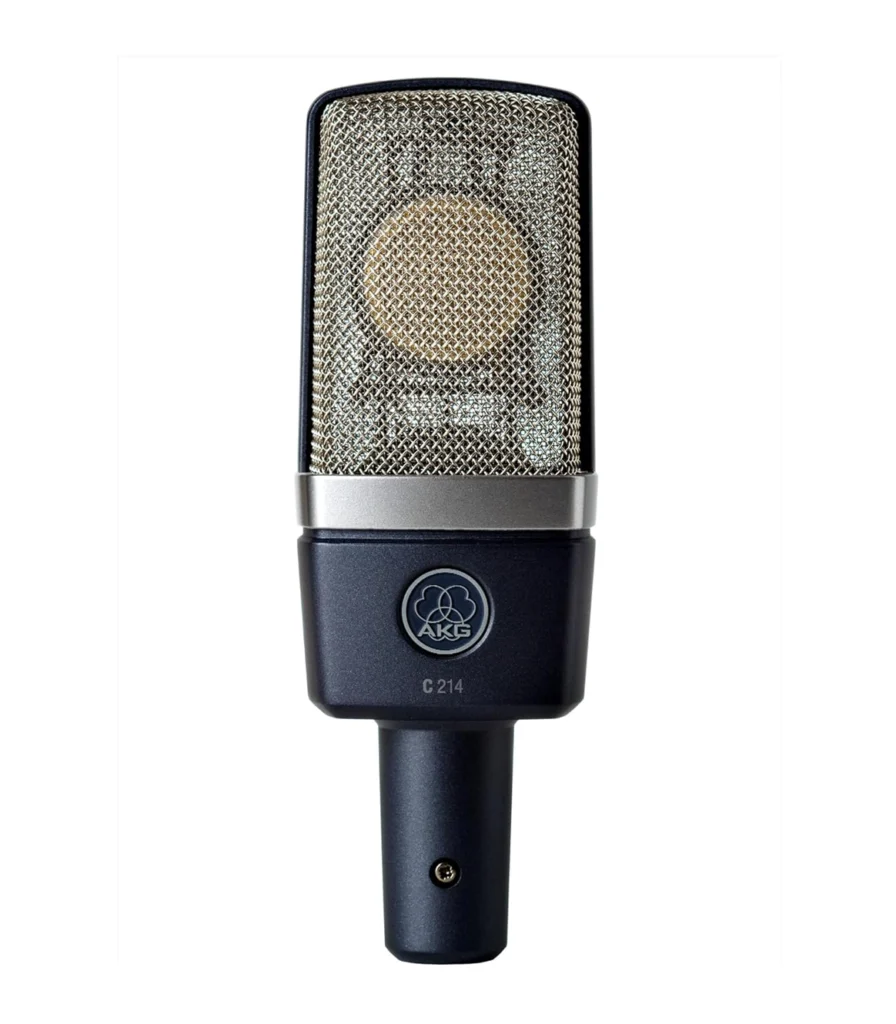
Audio-Technica AT2020 Review Frequently Asked Questions
As part of our Audio-Technica AT20202 review, we’ll cover some frequently asked questions about this mic.
Is the Audio-Technica AT2020 a USB mic?
No, the Audio-Technica AT2020 is not a USB mic. It is an XLR microphone that requires an audio interface or mixer with phantom power for operation. Audio-Technica does offer a USB version, the AT2020USB+, for those seeking USB connectivity.
How do you turn the Audio-Technica AT2020 on?
There is no on/off switch on the AT2020. To turn it on, connect it to an audio interface, mixer, or preamp via an XLR cable and enable the 48V phantom power on the connected device. It activates once it receives phantom power.
What Else Do You Need with the AT2020?
The Audio Technica AT2020 only comes with a stand-mount, so you might have to spend a bit more money later on if you want some accessories. We recommend also picking up a shock mount, pop filter, microphone stand, and XLR cable.
AT2020 kit – soft carry case and mount stand
Does the AT2020 need phantom power?
Yes, the Audio-Technica AT2020 requires 48V phantom power to operate, as it is a condenser microphone. This power is typically supplied through an XLR cable connected to an audio interface, mixer, or preamp that is equipped to provide phantom power.
Should You Buy the Audio-Technica AT2020?
If you’re a beginner or on a budget, looking for a reliable and affordable microphone with good sound quality for podcasting, home recording, or voiceover work, the AT2020 is an excellent choice. Its cardioid pickup pattern, wide frequency response, and ease of use make it a favorite among newcomers and seasoned users who need a solid backup or secondary microphone.
However, if you require a microphone with USB connectivity for direct recording to a computer without additional equipment, or if you’re a professional seeking advanced features like multiple pickup patterns or exceptionally high SPL handling, the AT2020 might not meet your needs.
In summary, the AT2020 is a great investment if you’re starting out or need a cost-effective, versatile microphone. But for more specialized applications or higher-end professional requirements, you might want to consider other options that better suit those specific needs.
If you enjoyed this Audio Technica AT2020 review, please check out some of our other mic reviews:
